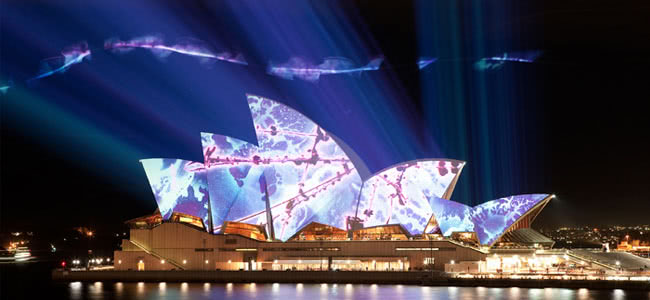The City Of Sydney council and Lord Mayor Clover Moore have been pushing to revitalise the New South Wales capital’s cultural scene in recent months, in response to the issues faced by live music venues across the CBD – most notably, the recent issues with the legendary Annandale Hotel – Moore and her constituents formed the Live Music Taskforce and the unveiling of the new ‘Creative City’ cultural policy discussion in paper last March.
Opening up the policy to suggestions and feedback from the public, Creative City city has now received some creative submissions that push spontaneous live music performance to the forefront. As the Sydney Morning Herald reports, public ideas call for more pop-up concerts in the CBD, as well as Sunday afternoon karaoke sessions, a speakers’ corner, and other cultural initiatives.
“We’ve already received dozens of fantastic ideas for improving our city’s cultural life – from night markets to open-mic karaoke in public squares,” said Lord Mayor Clover Moore in response to the public submissions, saying creativity was an essential part of “Sydney’s lifeblood.”
“One of the things that excited me is people are really up for the unexpected and temporary,” said Rachel Healy, City of Sydney’s Executive Manager of Culture, who shared Moore’s enthusiasm while noting that many of the public’s encouraging of spontaneous ‘pop-up’ culture events were cost-efficient.
Ms Healy also noted that Sydney should look to Brisbane’s Fortitude Valley, which was recently crowned the “envy of a nation” by a report that applauded the live music precinct as the ideal model for providing harmony between policy-makers, venue operators, and community. Ms Healy also said the entertainment district was worth looking to for ways to manage community expectations of sound levels. “We’ve already received dozens of fantastic ideas for improving our city’s cultural life – from night markets to open-mic karaoke in public squares.” – Sydney Lord Mayor Clover Moore
“I think we can also play a role in helping manage people’s expectations about what the inner city is like in a global city,” she said. “One of the things we’re looking at is how we can re-imagine our spaces,” Ms Healy added. “The infrastructure of the city, the walls, the footpaths. All of those spaces are simply canvasses.”
Some more submitted ideas to fill those ‘canvasses’ include installation of public games spaces such as table tennis, chess, and draughts venues in city parks, commissioning artists to create artwork for Sydney’s ferries, and a new lyric theatre in the city to host more musicals, opera, and ballet. Bringing more national and world premieres to the city, helping promote more of Sydney’s cultural presence.
Creative City, the Sydney Cultural Policy paper, was first announced in late March, and the discussion paper names music education and creative expression amongst innovative and visible advancements for the city as their main visions for the cultural sector.
“This paper aims to start a conversation,” said Lord Mayor Moore, who encouraged feedback from Sydney residents on the direction of the policy and calling for contributions and submissions. “[The council] is looking for opportunities and practical steps we can take to inspire a more creative Sydney,” noted Mayor Moore, saying the policy was about discovering “untapped opportunities within our grasp.”
Creative City also revealed that ‘culture’ takes up 9.4% of the city’s total expenditure, with the creative industries contributing an estimated $8.2 billion to the city’s economy in 2012. It’s also estimated that this value will soar to $14.9 million by 2030, with the industry encompassing a wide variety of activities already, including live music, architecture, visual and performing arts, publishing and media.
“One of the things that excited me is people are really up for the unexpected and temporary.” – Rachel Healy, City of Sydney’s Executive Manager of CultureThe policy also points towards the Live Music and Live Performance Taskforce, launched earlier this year and tasked to “consider the impact of the current regulatory environment on live music”, while also “assisting individuals and organisations negotiate the regulations and procedures for filming or staging events in public spaces.”
The taskforce, who will present their own report to the City of Sydney this July, includes the recently appointed National Live Music Coordinator for Sounds Australia Dr Ianto Ware and musician and policy activist John Wardle among its ranks.
Quoted within the policy document, Wardle notes the difficulties facing the Sydney’s live music scene insofar as “live music and performance across all artforms face great challenges from the competition for the entertainment dollar and digital alternatives.”
“Removing barriers and promoting local culture are essential roles for local authorities to play for live music and performance to survive in contemporary urban environments,” Wardle stipulates.
Part of that shift is the newly proposed live music precinct, spearheaded by Leichhardt Mayor Darcy Byrne, an ambitious project to redevelop Parramatta Road into a live music and culture precinct, and most notably, expressed his desire to see The Annandale’s live on as a successful and popular live music venue.
Modeled after Brisbane’s Fortitude Valley, Leichhardt council and the bordering Marrickville council have unanimously passed resolutions supporting the foundation and development of the live music precinct, that runs from Petersham to Sydney University, with Annandale forming the crux of the cultural hub. Though there are concerns the entire project could be undermined if the legendary pub is sold to owners who have no interest in continuing the site as a live music venue, a genuine concern of Mayor Darcy Byrne as receivers are set to announce the new owner.

































